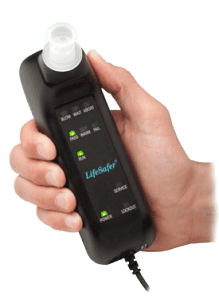 Installing and maintaining an ignition interlock device (IID) is a court-ordered consequence of drunk driving. These devices provide a level of security to the court, as well as to others on the road, ensuring that a person who has been convicted of a DUI/DWI charge no longer has the ability to drive after consuming alcohol. Each state has the power to define its own laws regarding when an IID must be installed that generally depend on the level of conviction and any aggravating circumstances surrounding the arrest. Moreover, the same states can also define the types of IIDs that are acceptable for the monitoring of a drunk driver’s behaviors and compliance with the court’s ignition interlock and other safety guidelines.
Installing and maintaining an ignition interlock device (IID) is a court-ordered consequence of drunk driving. These devices provide a level of security to the court, as well as to others on the road, ensuring that a person who has been convicted of a DUI/DWI charge no longer has the ability to drive after consuming alcohol. Each state has the power to define its own laws regarding when an IID must be installed that generally depend on the level of conviction and any aggravating circumstances surrounding the arrest. Moreover, the same states can also define the types of IIDs that are acceptable for the monitoring of a drunk driver’s behaviors and compliance with the court’s ignition interlock and other safety guidelines.
The Types of IIDs that are used today include:
- Standard ignition interlock devices will test a person’s blood alcohol concentration (BAC) to ensure sobriety before driving, as well as throughout the time the vehicle is in motion (“rolling re-tests”). These will also keep a log of events relating to the breath tests and vehicle operation to be sent to the DMV or other reporting agency for court compliance.
- Camera-enabled ignition interlocks will not only test BAC and monitor the vehicle’s operation, but, these devices will provide video proof that the driver is the person being tested. Additionally, these types of IIDs can track the vehicle’s location and the overall alcohol consumption of the driver throughout the day.
- Portable alcohol monitors can be used in conjunction with any types of IIDs, and keep track of a person’s alcohol consumption outside of driving situations in order to comply with a court-ordered sobriety program.
Because of the serious nature of any alcohol-related conviction, the types of IIDs available provide a full scope of monitoring and reporting to authorities in order to maintain safety for everyone across the country.

Leave a Reply
You must be logged in to post a comment.